We are big fans of trees here at Green Vista, but we also know the benefits of planting the right trees on your Northern Virginia property. While trees, in general, have dozens of benefits, some trees’ negative qualities outshine their good ones.
In this article, we’ll cover some trees that we recommend that you do not plant on your Northern Virginia property due to:
- Invasive nature,
- Messy seeds,
- Weak structure, or
- Horrible scents
Keep reading to learn which trees we would advise against.
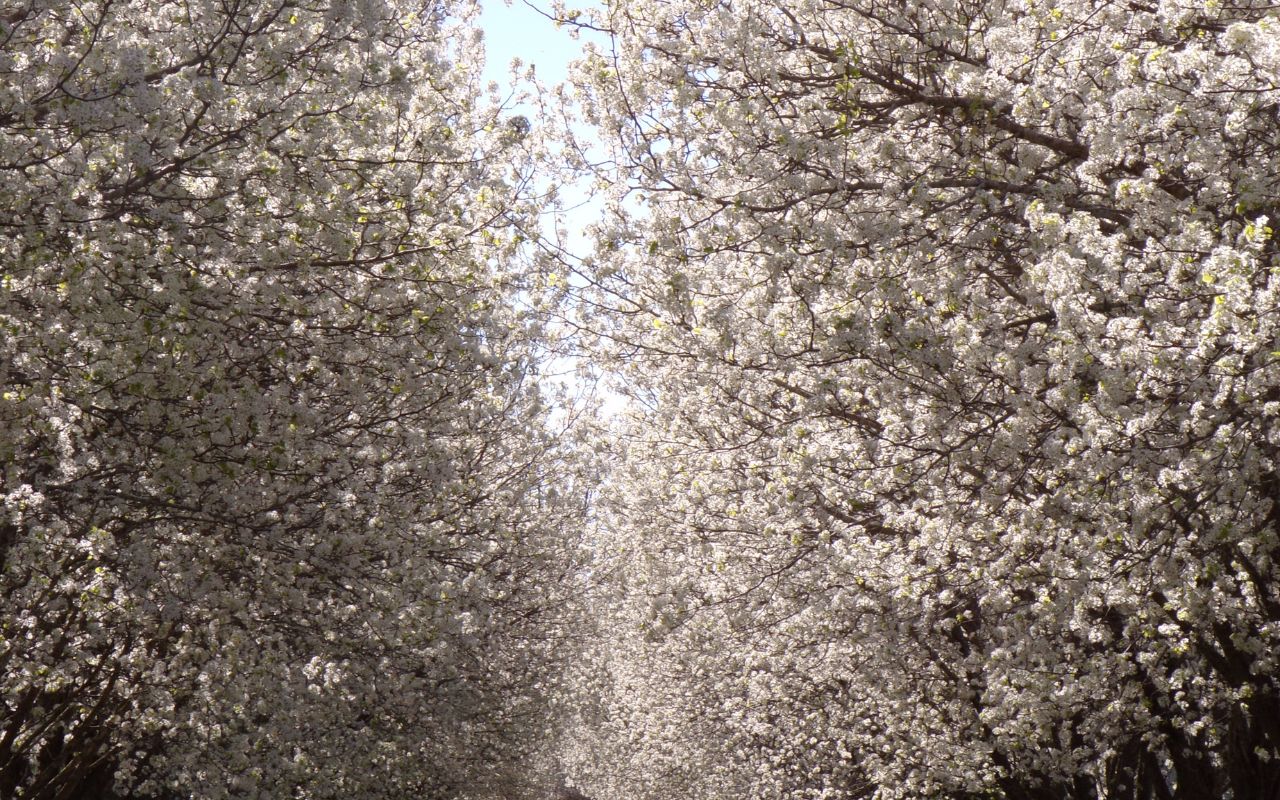
Bradford or Callery Pear (Pyrus calleryana)
Bradford pear trees are common street trees found throughout the Northeast United States because, for a time, they were considered the ideal tree. They have beautiful spring flowers, a fast growth rate, grow in most conditions, and have an attractive shape.
However, the issues that Bradford (also known as Callery) Pear trees have greatly outnumber any good qualities they have, which is why they are on several invasive tree lists.
The beautiful, white spring flowers, for instance, smell horrible. And the smell can carry across a neighborhood, making any time outdoors unbearable.
The fast-growing trees also turn out to have very weak branches, brittle wood, and a branching pattern that makes the trees structurally unsound. It’s never ideal to have a tree on your property where branches could break and fall at any time.
While Bradford pear trees were planted as small or mid-size ornamental trees, they ended up growing….and growing…to be very tall trees, often 50 feet tall or more.
Those issues alone are enough to discourage planting Bradford pear trees on your property, but their ability to grow well in most conditions has led to this tree becoming invasive, meaning that it spreads rapidly and inhibits the growth of native plants. Plus, since this tree is native to Asia, it has few pests or diseases to control its spread (again, that was initially a good thing) and does not benefit our local wildlife.
Instead of Bradford or Callery Pear Trees, Plant these Native Alternatives:
- Serviceberries (Amelanchier spp.)
- Common Pawpaw (Asimina triloba)
- Redbud (Cercis canadensis)
- Dogwood (Cornus florida)
- Common Persimmon (Diospyros virginiana)
- Black Cherry (Prunus serotina)
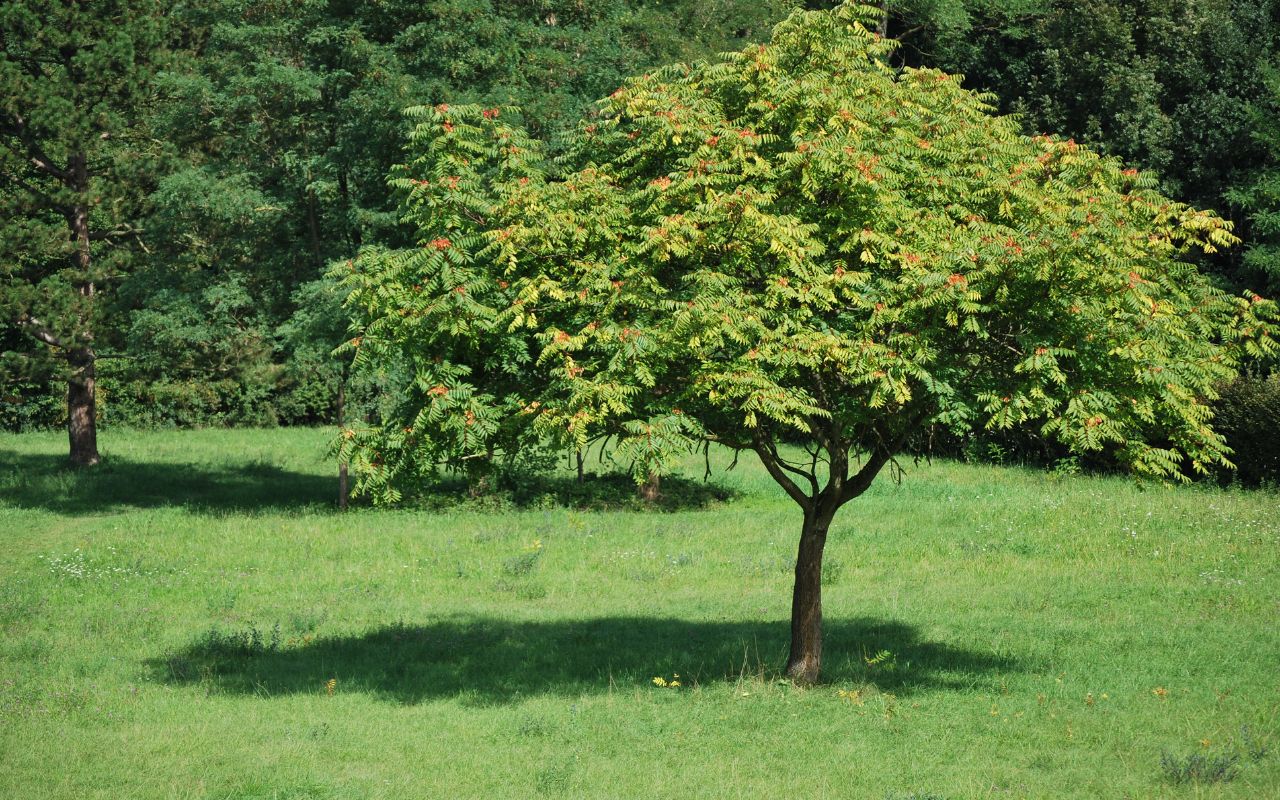
Tree-of-heaven (Ailanthus altissima)
Tree-of-heaven has received attention lately because it is the main source of food for the invasive spotted lanternfly (SLF). Like the spotted lanternfly, the tree is native to Asia and has become an invasive tree in Virginia.
Tree-of-heaven is also called paradise tree, Chinese sumac, stink tree, or Ailanthus. It is so invasive in Virginia (along with other areas of the United States) that the Department of Forestry in Virginia has created a handout with information on this tree, its spread across the state, and some methods of removing or controlling it.
Tree-of-heaven is hard to control because it not only spreads by the thousands of seeds it produces, but it also resprouts from the roots. And once it starts to grow, it grows rapidly, sometimes 3 to 6 feet a year! It is skilled at taking over our native vegetation and can be difficult to eradicate once it begins to grow.
If you have a tree-of-heaven on your property, we recommend removing it as soon as possible.
Instead of Tree-of-Heaven, Plant these Natives:
- Eastern Redbud (Cercis Canadensis)
- Common Persimmon (Diospyros virginiana)
- Winged or Shining Sumac (Rhus copallinum)
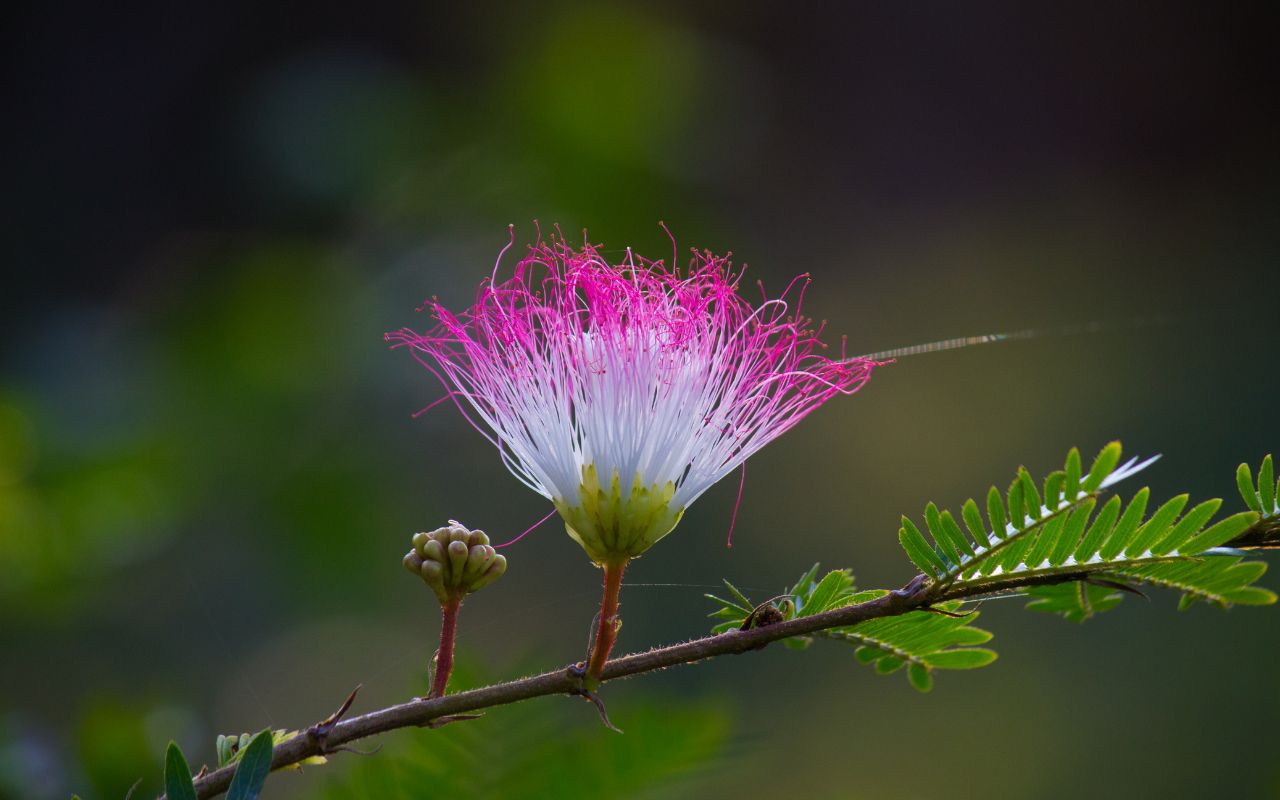
Mimosa or Persian Silk Tree (Albizia julibrissin)
The mimosa, or Persian silk tree, is most known for its unique feathery white and pink flowers. Another fast-growing tree, it can easily reach 30 feet tall despite having a lifespan of only 30 years.
Another way to recognize a Persian silk tree is from its leaves. They resemble fern leaves and will “close” when they are touched, at nighttime, or during rainfalls. Because this tree is native to Asia, some Asian names for the mimosa tree refer to this unique quality, calling it a “sleeping tree,” “shut happy,” or even “night sleeper.”
The mimosa tree, so called because of its similarity to mimosa plant leaves, creates an abundance of seed pods, which not only help this invasive tree spread but can create quite a mess.
This tree, thanks to its fast-growing nature, has brittle wood with branches that often break, especially in high winds or from heavy snowfalls.
Due to its rapid growth and abundant seeds, this is known to be one of the invasive trees in Virginia, often choking out our native trees.
Instead of Mimosa Tree, Plant These Natives:
- Serviceberries (Amelanchier)
- River Birch (Betula nigra)
- Eastern Redbud (Cercis canadensis)
- White Fringetree (Chionanthus virginicus)

Autumn Olive (Elaeagnus umbrellata)
While technically a shrub, autumn olive can grow up to 20 feet tall and 30 feet wide, so it still can make quite a large impact on your property.
Autumn olive, thorny olive, and Russian olive are all part of the Elaeagnus family and are each considered invasive tree in Virginia.
For a while, this shrub was seen as beneficial because of the abundant fruit it provided for wildlife. The drupes are even edible for humans.
However, it grows and shades out other plants, and can even climb and may block needed sunlight from trees. It spreads through root suckers and seeds, so it has quickly spread throughout all of Virginia.
Instead of Autumn Olive, Plant these Native Alternatives:
- Groundsel (Baccharis halmifolia),
- Buttonbush (Cephalanthus occidentalis)
- Pepperbush (Clethra alnifolia)
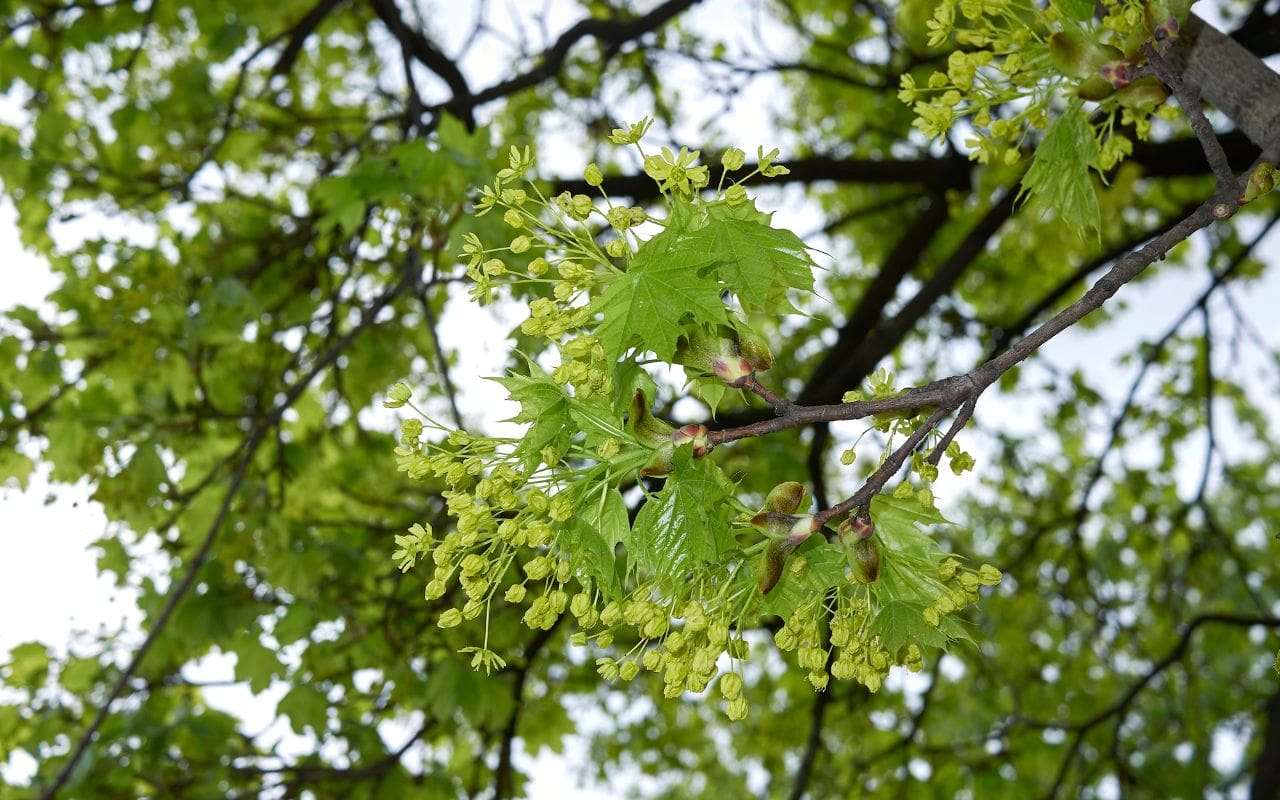
Norway Maple (Acer platanoides)
Maple trees are beautiful, but you might want to stay away from planting a Norway maple in your Northern Virginia yard. They can grow 40 to 60 feet tall, and the deep shade created by their tree canopy prevents grass, plants, and other trees from growing, which is causing Virginia’s forest diversity to decline. It also makes it difficult to grow gardens, flowerbeds, or shrubs in their shade.
Norway maples also have shallow root systems, which can lead to unstable trees, sidewalk upheaval, tripping hazards, and expensive repairs.
Thanks to self-seeding, it can become a weedy plant with seedlings all over your property that you may constantly have to uproot.
Last but not least, they are very messy trees. They drop flower buds, then seeds, plus twigs and branches and many fall leaves. Branches tend to break off from high winds or heavy snow.
Instead of Norway Maple, Plant These Native Alternatives:
- Sugar Maple (Acer saccharum)
- Red Maple (Acer rubrum)
- Oaks (Quercus),
- Basswood (Tilia americana)
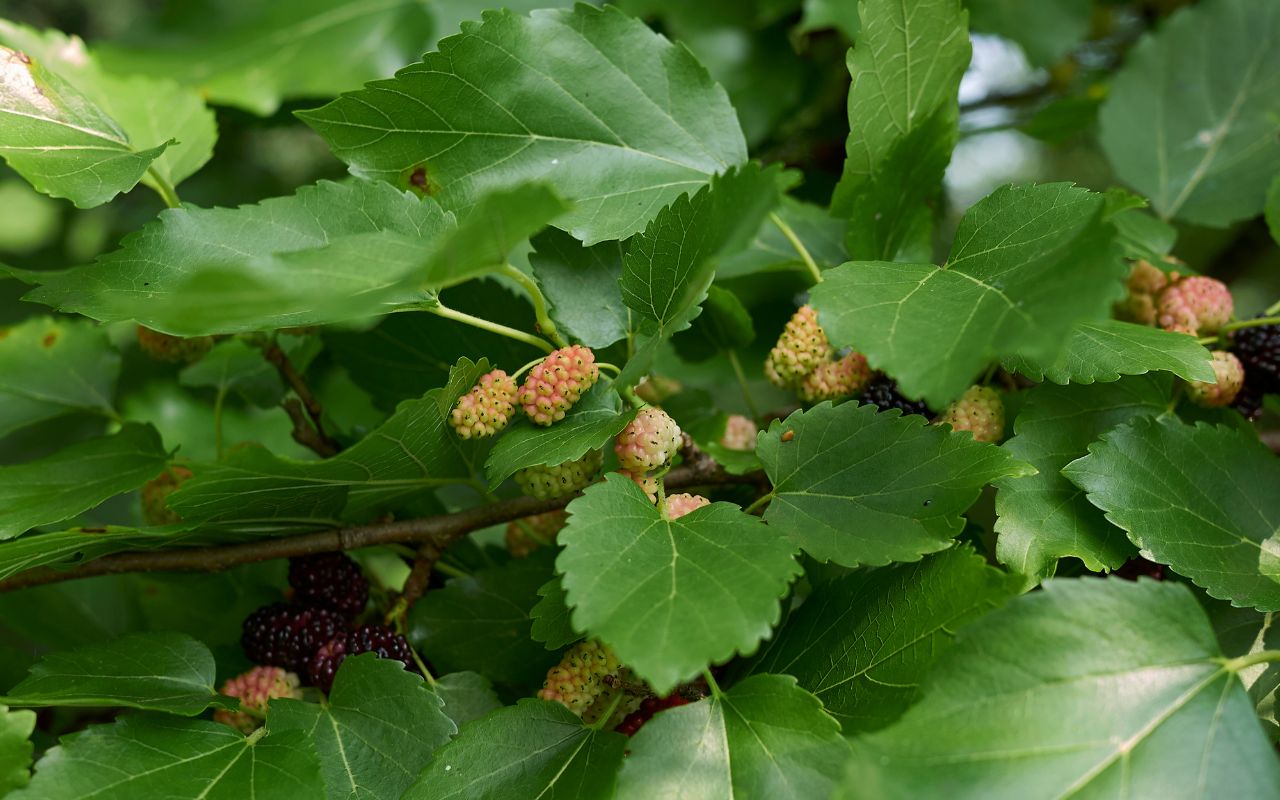
White Mulberry (Morus alba)
While red mulberries (Morus rubra) are native, white mulberries are not and are considered invasive. It can be hard to tell these two trees apart, but the biggest difference is that white (invasive) mulberry trees have glossy leaves, while red (native) trees do not.
It’s important to note the difference because not only are white mulberry trees invasive, but they also have a root disease that is easily transmitted to our native red mulberries.
White mulberry trees can grow 40 to 60 feet tall and 40 feet wide. They may have been imported here (from Asia) in the attempt to start a silk trade, as the leaves are often fed to silkworms.
Though it is called white mulberry, the fruit can range in color from white to purple and looks similar to a blackberry. Because of this fruit, known as a drupe, there are often purple stains on the ground surrounding mulberry trees.
Instead of White Mulberry, Plant This Native Alternative:
- Red Mulberry (Morus rubra)
Invasive Trees in Virginia
While we’ve highlighted some of the worst offenders, this is by no means an exhaustive list. You can learn more about invasive trees in Virginia at these links:
Virginia Invasive Plant Species List
Trees that originated from other countries may do well in our climate initially but, over time, have problems of their own. We suggest planting trees native to Virginia whenever possible. They are well adapted to our climate, benefit our wildlife, and are more likely to survive our hot summers and snowy winters.
Learn more about how to choose the best tree for your yard >>
Green Vista Can Help
We have lots of information on our website to help you decide what tree will be a perfect match for your property. We’ll also come out and help you evaluate where to plant it and tell you what to do if something goes wrong. We love trees and want yours to have a long life, starting with planting the right tree in the right place!
Get helpful tips, local news, inspiring stories, and more delivered right to your inbox every month. Don't miss another issue - join today!





